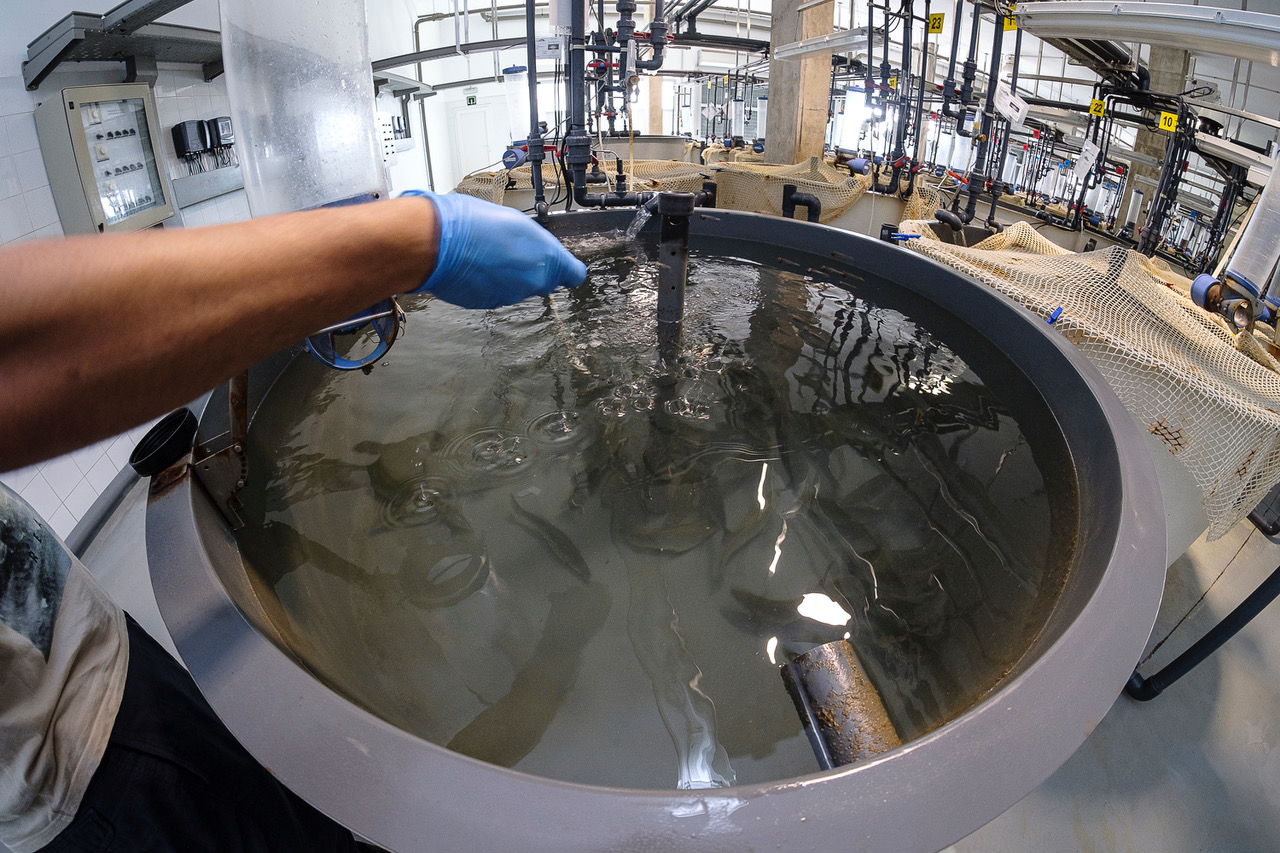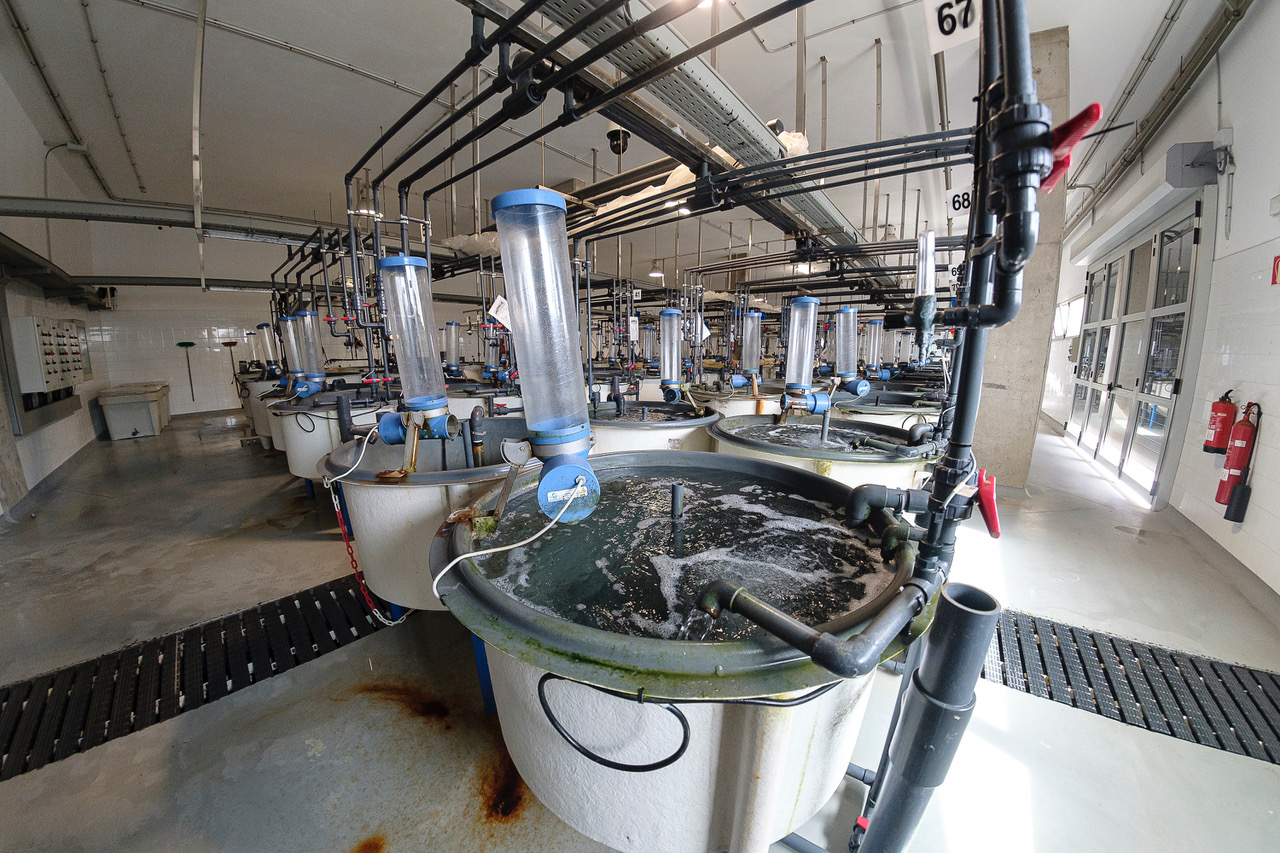The research, supported by the world’s leading aquaculture company, will make it possible to feed this key species for Mediterranean aquaculture with novel ingredients, such as poultry meals or microalgae oil, which fosters the growth of the circular economy.
90% of the seabass consumed in Europe comes from aquaculture, so the advances that improve both the quality of the fish and the sustainability of its diet represent a great benefit for society.
The University Institute for Research in Sustainable Aquaculture and Marine Ecosystems (ECOAQUA) of the University of Las Palmas de Gran Canaria (ULPGC), has demonstrated that genetic selection applied on farmed-seabass as well as the use of more sustainable, alternative diets, improves the quality and nutritional characteristics of fish final product for human consumption, resulting in a specimen with less perivisceral fat and richer in nutrients such as omega-3. Furthermore, genetic selection also improved protein retention, and the digestibility coefficient of dietary protein and amino acids, thus increasing the availability of nutrients for the seabass.
This is one of the main discoveries of the study entitled ‘Nutritional Innovations in Superior Genotypes of Sea Bass (Dicentrarchus labrax): Implications for Fish Performance and Feed Utilization’ that has been published recently in ‘Aquaculture’, one of the most internationally recognized journals related to aquaculture research.
The main goal of this study was to determine the effectiveness of the genetic selection for the growth of sea bass, 90% of which is marketed through specimens that come from aquaculture, up to close to 300,000 tons per year.
The work, which is part of the project AquaIMPACT - Genomic and Nutritional Innovations for Genetically Superior Farmed Fish – financed by the European Union within the Horizon 2020 program, further allowed, the introduction of an alternative diet that can partially replace fishmeal with poultry meal and fully replace fish oil with a mixture of poultry oil and a new microalgae oil, something that constitutes a step forward in favor of sustainability for the aquaculture industry.

The specific support of Skrettings, a world-leading Norwegian company in the manufacturing and supply of aquaculture feed, demonstrates the interest and importance the industry has for the development of genetic selection programs in aquaculture, to increase fish productive performance, something that has been demonstrated in recent years. Genetic selection increases fish growth rate and, therefore, reduces the rearing time and the investment necessary to achieve the commercial size.
The research was led by Daniel Montero, and with the participation of Marta Carvalho, Antonio Serradell, Rafael Ginés, Félix Acosta, and Silvia Torrecillas, from the Aquaculture Research Group (GIA) of ECOAQUA counted also with the collaboration of other researchers from different university centers from Spain, Italy, France, and Norway. And it shows, therefore, that the genetic selection of fish helps to employ new nutritional strategies when producing feed for fish farming, containing more sustainable ingredients.
Promoting the circular economy
The sustainable development of the aquaculture industry is based on the use of conventional and emerging alternative raw materials that contribute to a circular economy and that can reduce dependence on fishmeal and oils from oceanic fish stocks.
In addition to the benefits previously cited, this study reveals that the selected fish present significantly lower perivisceral fat than the non-selected genotype, with a richer fillet nutritional profile, especially by increasing the levels of omega-3 fatty acids, like DHA, with an important nutritional value for the consumer.
To carry out the study, two families of fish juveniles were obtained from broodstock: selected for multiple traits that included high growth, and unselected, wild-type genotype. Both genotypes were then fed with, either a control diet based on commercial standards with fishmeal (20%) and fish oil (7%) or were provided with the aforementioned future diet, based on more sustainable ingredients by reducing the fishmeal and fish oil.
From the second month of feeding until the end of the trial, the reared sea bass selected for 7 generations obtained better growth results than the wild-type genotype, related to better utilization of feed and dietary nutrients.
In addition to the Aquaculture Research Group of the ULPGC, which has led this initiative have participated in the study the Department of Biotechnology and Natural Sciences of the University of Insubria (Italy), the Skretting Aquaculture Research Center, from Norway; and the French center for the Exploitation and Conservation of Marine Biodiversity (MARBEC) from the University of Montpellier, the Union of Poultry and Aquaculture Farmers in France (SYSAAF), and the Gravelines Marine Hatchery.


